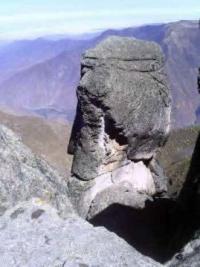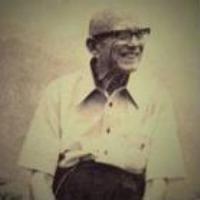Copy Link
Add to Bookmark
Report
SURFPUNK Technical Journal 052

Date: Mon, 8 Feb 93 18:40:08 PST
Reply-To: <surfpunk@osc.versant.com>
Return-Path: <cocot@osc.versant.com>
Message-ID: <surfpunk-0052@SURFPUNK.Technical.Journal>
Mime-Version: 1.0
Content-Type: text/plain
From: surfpunk@osc.versant.com (ab fzbxvat va gur nhgbabzbhf mbar)
To: surfpunk@osc.versant.com (SURFPUNK Technical Journal)
Subject: [surfpunk-0052] DIGEST: cars, voice encoding, news, AMER=Civil Liberties
Keywords: surfpunk, Alliance for Magical and Earth Religions
+ + Let's forget we're pretending.
+ Let's pretend it's all real.
+ -- Nick Herbert
+ (at Komotion, san fran, 6feb93)
++++++++++++++++++++++++++++++++++++++++++++++
In this digest:
-- [dave@rtfm.mlb.fl.us (David D. Clark)] Surfpunk Submissions/Commentary
-- ..For submissions, that is.
-- ...On the abolition of cars:
-- ...On real-time voice encoding:
-- AP: Moscow--Russian scientists unfurled a mirror in space Thursday
-- Mac Week, 1 Feb 93. "Democrats take swift action on funding of
information nets", Mitch Ratcliffe byline.
-- Factoid of the day
-- [kwan] Re: [surfpunk-0050] Greenpeace: Autosaurus: The first anti-car ad
-- [Don Webb <0004200716@mcimail.com>] AMER=Civil Liberties
________________________________________________________________________
________________________________________________________________________
From: dave@rtfm.mlb.fl.us (David D. Clark)
Subject: Surfpunk Submissions/Commentary
To: strick@osc.versant.com (Henry Strickland)
Date: Sat, 6 Feb 93 1:35:09 EST
Action: usually equals reaction.
Priority: Urgent
X-Guess-What: Chicken Butt.
...Since SPJ is moderated, will messages to surfpunk@ get to you, or is sending
directly to you better, or worse? ..For submissions, that is.
[[ Always submit to surfpunk!
that way I know you intended it to be broacast. --strick ]]
...On the abolition of cars:
Until public transportation gets a LOT better/more convenient, I don't
think many are going to switch over to it. It's a REAL pain in the ass
to spend an hour to get to wherever you want to go in Atlanta, where
MARTA ("It beats getting there") only to walk another mile or two
since buses don't go where you want to, especially since it takes less
than that even at the height of rush hour. Perhaps in NYC I could
handle it, but for now, as long as I have a car that gets 33mpg, I'm
going to use it. It's also a pain in the butt to find out that MARTA
stops running at around 1AM, when you've spent 90 minutes walking to a
station (since the busses stopped at 11:30) to arrive about 5 minutes
after the last train going your way has left your station.
...On real-time voice encoding:
I was thinking of this tonight, before reading about it in the SurfPunk
Journal. Must be some type of synchronicity. Anyway, Macintoshes
support 4.4kHz as a standard recording rate-not good, but about the
bandwidth of telephone lines, correct? The Mac also supports a number
of standard compression ratios, up to at least 6:1; this would drop the
data volume to about 750 bps- below v.32. Add in a custom compressor
(perhaps Quicktime can do this right now-they have some impressive
compression ratios for video for near-real-time
compression/decompression, based mostly on disk access time than on
anything else) and a very simple encoding scheme (I don't think that
with a non-standard compression scheme that even a very simple code
could easily be broken to create a recognizable file, perhaps the NSA
with their huge computers could but it's probably beyond the reach of
most local/state/national government agents.) and I think the
technology is either here today for this, or will be within the next
year. As a matter of fact, I wouldn't be surprised to see modems with
this capability coming on the market RealSoonNow, if it is indeed legal
under the Digital Telephony Bill (I'm not sure about the details of
this bill.)
[[ there's been a lot of discussion on cypherpunks, if you're interested. ]]
...New item:
AP: Moscow--Russian scientists unfurled a mirror in space Thursday and
briefly bounced sunlight onto the night side of Earth, testing a solar
spotlight that eventually could illuminate parts of the planet.
The troubled Russian space agency hailed the experiment as a qualified
success and immediately began fishing for investors, saying the
pre-dawn test proved a space spotlight was feasable.
"All the pricipal scientific problems were solved by this experiment,"
flight control director Viktor Blagov said. "Now we need to collect
money to continue the program."
It was unclear whether the experiment, named Operation Banner, came off
exactly as planned. But officials claimed victory in the most important
part, in which the 82-foot-wide reflective sheet was spun open like a
parachute behind the unmanned cargo ship Progress.
"It was not completely successful, but it did go rather well," said
Semyon Lukasky, an aide to the project director. He declined to specify
the troubles, saying full details would be released later.
The experiment could be a step in creating a revolutionary stellar
spotlight out of several such banners. Such a spotlight could be used
to light up night-time work, rescue operations, blacked-out cities or
sun-starved polar areas.
The main purpose of the test was to see whether the sheet could be
opened using centrifugal force and then maneuvered. Scientists think
such a banner could be used like a "solar sail" to harness energy from
the sun, just as sailboats capture wind to move in water.
Scientists released the spinning mirror from the unmanned Progress
about 7:45 p.m. EST Wednesday, after the ship was detached from the
orbiting Mir space station, Blagov said from the control center north
of Moscow.
The videotape made by Mir's two-man crew showed the mirror opening
slowly-- like a metallic flower blossoming-- from one end of the
Progress. In a profile view, it looked like a silver umbrella over the
end of the spaceship.
Blagov said scientists angled the mirror to reflect sunlight from the
opposite side of the Earth onto the night side of the planet.
The beam of reflected sunlight created a weak spot of light on the
ground. Cosmonauts Gennady Manakov and Alexander Poleshchuk, looking
down from the Mir, "observed a section of our planet's surface
illuminated with sunlight," the ITAR-Tass news agency said.
Scientists had said the spot was expected to measure about 2 1/2 miles
in diameter. Because the banner was orbiting the globe, the spot moved
quickly across Europe towards the former Soviet Union.
Lukasky said flashes of light were seen by observers in the Brest and
Gomel regions of the former Soviet republic of Belarus.
James Oberg, a U.S. expert on the Russian space program, said an
oberver in Canada reported seeing three starry spots moving across the
pre-dawn sky. Oberg surmised they were the Mir, the Progress and the
banner as it drifted away from the cargo ship.
...What are the implications? What if the people in the dark want to
stay in the dark? What would the effects of bringing light to the
(ant)arctic be on the native animals? I suppose that if solar power
became more common some energy benefit could be gained, but I believe
the money would be better spent in developing more efficient solar
cells. Apparently, though, this would have close to the same effect on
a planet (Earth) as Larry Niven's "shade squares" had on his
Ringworld--the artificial creation of day & night.
New Item:
Mac Week, 1 Feb 93. "Democrats take swift action on funding of
information nets", Mitch Ratcliffe byline.
Washington--Senate Democrats with a technological agenda bolted out of
the starting blocks on the first day of the new Congress by introducing
a bil that would pour $120 million into information networks in 1994.
Senate Bill 4 (S.4), known as the National Competitiveness Act of 1993,
resurrects Vice President Al Gore's call for high-speed network
connections between the Internet, schools, industry, hospitals and
libraries.
The bill draws heavily on Gore's Information Infrastructure and
Technology Act of 1992 and President Clinton's campaign promise to
assist U.S. businesses to become more competitive in the global
market. The Democrats are trying to leverage their ownership of the
Senate and White House by pushing for the first infrastructure funding
in 1994, two years earlier than Gore had called for last year.
Introduced by Sen. Ernest Hollings (D-S.C.), the bill also would add
funding to support research collaboration between high-technology
industries and the National Institute of Standards and Technology, as
well as for alternative power-generation research. A dozen senators are
co-sponsoring the bill.
That S.4 was introduced the day after Clinton's inauguration signals
the Democrats' commitment to improve information networks. By Senate
tradition, the Democrats were allotted the first five bills of the
session for those issues they most want passed, while the next five
were given over to the Republicans for their pet initiatives.
Apple CEO John Sculley and other leaders of the Microelectronics and
Computer Technology Consortium, an industry research facility based in
Austin, Texas, have lobbied hard on Capitol hill since Congress
convened last month.
On Jan. 19 Sculley testified before the House Telecommunications and
Finance Committee in favor of infrastructure investments. The House
will have to consider its own version of the National Competitiveness
Act before the legislation can become law.
"There is a priority bill for Sen. Hollings and Majority Leader Sen.
George Mitchell (D-Maine)," a Hollings staffer said. "There is also a
group of Republicans who are interested in technology and tax policies
that are good for industry, so there's broad support."
-D
"It's impressive how easily most human beings are entertained."
--David Letterman, 4 Feb '93
"Remember, everybody, life is a swordfish tostada."
--Ibid, 5 Feb '93
Factoid of the day: For fisical 1992, Motorola, Inc. reported annual sales of
$13.3 billion, for profits of $576 million; Intel Corp reported sales of
$5.84 billion, for profits of $1.07 billion. Apple's sales were $2 billion
for its first quarter for profits of $161.3 million; IBM's 1992 sales were
$64.5 billion for a loss of $4.97 billion (due to restructuring).
________________________________________________________________________
From: Kwan-Seng Low <kwan@osc.com>
Subject: Re: [surfpunk-0050] Greenpeace: Autosaurus: The first anti-car ad
Date: Fri, 5 Feb 1993 19:23:19 -0800 (PST)
I'm not so much of anti-car , rather anti-car that unnecessarily cause
more pollution. I'm pro-electric car, when it's available.
Kwan
________________________________________________________________________
Subject: AMER=Civil Liberties
Date: Sun, 7 Feb 93 21:20 GMT
From: Don Webb <0004200716@mcimail.com>
To: surfpunk <surfpunk@osc.osc.com>
To: Fringeware <fringeware@wixer.cactus.org>
Dear Fringeoids,
Dear Surfpunks,
And you private people getting this.
This is one of my favorite Civil liberties groups.
Please post their info around, if you feel they are a worthy cause.
Thanks,
Don Webb
MCI 420-0716 or donwebb@well.sf.ca.us
----------
The Alliance for Magical and Earth Religions (AMER) is a St.
Louis-based organization made up of representatives of several
distinct magical and/or Earth-centered religious traditions. Our
members include witches, neo-pagans, Satanists, and Christians,
working together for freedom of religion for all Americans.
STATEMENT OF PURPOSE
1. AMER will defend the right of every American to practice his or
her own religion, insofar as that religion's practices do not
directly harm anyone. In particular, AMER will actively campaign
for tolerance for magical and Earth-Centered religions.
2. AMER will work to promote a positive image for magical and
Earth-centered religions, and to counter negative propaganda about
such groups.
3. AMER will promote cooperation among the various magical and
Earth-centered religious groups.
4. AMER will serve as a source of accurate information on magical
and Earth-centered religions and practices.
DEFINITIONS
Magical Religion: any religious belief or practice which includes,
as an aspect of its faith or an element in its ritual, the practice
of what they call magic or the use of psychic powers.
Earth Religion: any religious belief or practice which holds as a
tenet a reverence for the Earth.
HOW DOES AMER WORK?
AMER will provide speakers to schools, police groups, churches, and
anyone else who is interested about learning about magical and earth
religions.
AMER'S members work together to combat negative attitudes about the
occult by writing letters to individuals and organizations who have
disseminated incorrect information about the occult. We also help
victims of religious discrimination through letters, phone calls and
personal contact.
AMER AND THE MEDIA
AMER monitors media coverage of topics which affect the magical
community. When one of our members sees an article or television
story which gives unfairor slanted coverage to an event which
involves "the occult", we contact the news organization in question
to express our disapproval. We also write to commend news
organizations which provide what we see as "good coverage". We hope
that our efforts will promote fair media treatment of members of
magical and earth religions.
AMER AND THE POLICE
AMER's members are also available to work with police departments to
provide expert advice on crimes and rumors of crimes which involve
or appear to involve members of the magical community.
AMER AND THE CLERGY
AMER works to contact clergy of all faiths and let them know about
our concerns, in the hopes that they will come to understand, and
even to tolerate, magical and earth religions.
COMMUNITY SERVICE
AMER encourages all of its members to participate in community
service projects such as food drives, disaster relief, or
environmental projects. AMER's St. Louis members meet every six
weeks to clean up a stretch of highway. We feel that this highly
visible form of service helps promote a positive image for
occultists.
WILL AMER TELL EVERYONE ABOUT MY RELIGION?
The only members of AMER who are required to appear or speak in
public are the members of the Board of Directors. If you wish, your
membership can be kept totally confidential. In addition, AMER does
not promote or endorse the activities of any specific religion, so
you will not be asked to participate in any religious activities.
AMER NEEDS YOU
None of AMER's goals can be accomplished without a large and
enthusiastic membership. We need volunteers for a variety of
projects, from letter-writing to highway cleanup. Money? Of course
we need it, but we need you even more.
To help with an AMER project, send your name and phone number to
AMER Volunteers at the address below. If address only, a small
donation for postage would help.
TO JOIN
You can obtain the necessary membership application forms and other
membership information by writing to AMER at the address below.
TO CONTRIBUTE
Make checks or money orders out to Alliance for Magical and Earth
Religions and send them to AMER Treasurer at the address below.
FOR PUBLICATIONS
To obtain copies of AMER's "The Truth About Human Sacrifice", "Dream
No Small Dreams", "The Truth About Ritualized Child Abuse",
"Exercising Your Writes" or our newsletter, The AMER Intelligence,
send a stamped, self-addressed envelope to AMER Public Information
Officer at the address below.
ANY QUESTIONS?
Send your questions and (if possible) a stamped, self-addressed
envelope to AMER at this address.
Alliance for Magical and Earth Religions
P.O. Box 16551
Clayton, MO 63105
(314)994-1026
________________________________________________________________________
________________________________________________________________________
The SURFPUNK Technical Journal is a dangerous multinational hacker zine
originating near BARRNET in the fashionable western arm of the northern
California matrix. Quantum Californians appear in one of two states,
spin surf or spin punk. Undetected, we are both, or might be neither.
________________________________________________________________________
Send postings to <surfpunk@osc.versant.com>, subscription requests
to <surfpunk-request@osc.versant.com>. MIME encouraged.
Xanalogical archive access soon. Fundamentally changing society.
________________________________________________________________________
________________________________________________________________________
Someone else mentioned the almighty Claude Shannon in another
message concern- ing maximum bit-rate of a voice channel, and I
wanted to clear up what was said. Shannon's capacity formula
said capacity in bits-per-second equals bandwidth of channel in
hertz times the base-2 (binary) logarithm of one plus the
signal (in watts) to noise (in watts) ratio. As a side note, I
say watts because commonly, today, you measure signal and noise
levels in decibels (dB), and the S/N ratio is in dBm's
(decibels per milliwatt). In the phone system, we say a voice
frequency channel (VFC) has a bandwidth of 4kHz. In-band
signalling is approximately from .3 to 3kHz. This formula
(yielding the Shannon limit) is based on a "Gaussian Band
Limited Channel" (GBLC), which is an approximation of a VFC,
with a signal wave of S watts at the input of an "ideal"
low-pass filter, subjected to Gaussian noise with a mean power
of N watts (uniformly). Written, it's C = W log2(1 + S/N). A
simple example you can do in your head is W=3000Hz, pick an S/N
of 1023, 1+1023 is 1024, and base-2 log of 1024 is simply 10,
3000 * 10 is 30000, so Shannon's limit for these values is C =
30000bps. Play with it. Bear in mind, Shannon didn't consider
intersymbol interference. Nyquist did. Compare this to Harry
Nyquist's 2-bit rule, 2W, or double the bandwidth, and get the
maximum bit rate (this line of thinking led him to the infamous
Nyquist sampling theorem, sample at a rate twice the bandwidth
of a channel, and you have all the information you need to
reconstruct it at the receiving end). But Nyquist deals only
with binary systems. Shannon's formula shows that
theoretically you could increase the data rate indefinitely by
increasing the S/N ratio. We achieve this in modern modulation
systems by using multilevel systems, (M-ary for short, with M >
2), and hence the protocols I described in my previous
message. We can apply Nyquist's 2-bit rule to the multilevel
system by saying 2W log2 M bps is achievable, with an
acceptable error rate. As we increase M (number of bits per
symbol), so we have to find ways to increase the signal to
noise ratio, to maintain an acceptable error rate. The whole
thing is stupendously interesting to me, as I hope it is to the
rest of you folks. To blow your mind with sheer genius, read
Shannon's classic "A Mathematical Theory of Communication" in
Bell System Tech Journal, July and October of '48 at your local
university. Also Nyquist's "Certain Topics in Telegraph
Transmission Theory", April '28. Know your roots.
Good night.
Phiber Optik <phiber@eff.org>




















